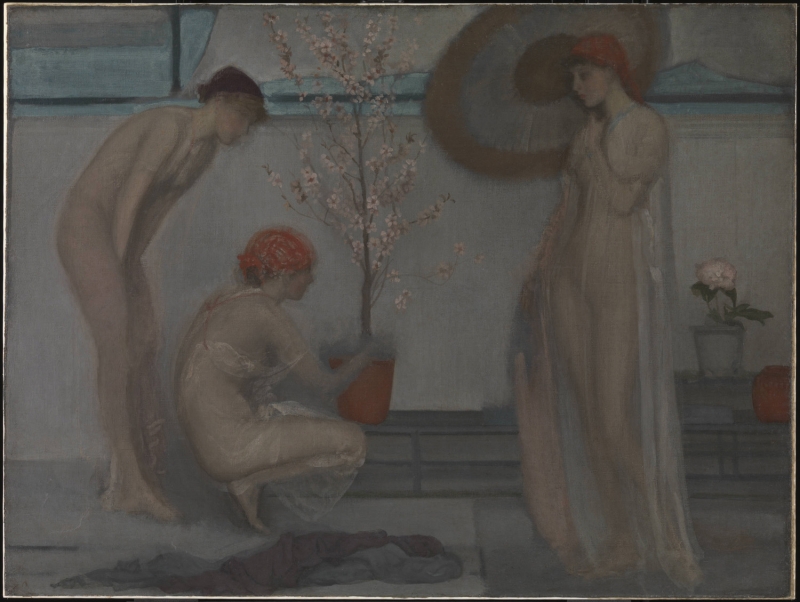Pink and Grey: Three Figures, a copy of The Three Girls [YMSM 088], dates from 1879. 1
Whistler declared that 'on one of the last days in the White House I painted a rough copy, or commencement of a copy, of the 3 girls - on the same size canvas.' 2 Whistler's house and studio, the White House in Tite Street, was sold by auction on 18 September 1879. Whistler's letter implies that this copy was painted in the first half of September.
Last updated: 25th November 2020 by Margaret






